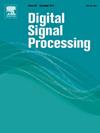An enhanced UNet3+ model for accurate identification of COVID-19 in CT images
IF 2.9
3区 工程技术
Q2 ENGINEERING, ELECTRICAL & ELECTRONIC
引用次数: 0
Abstract
The COVID-19 pandemic has resulted in an out-of-control number of infections worldwide, causing severe and irreparable consequences. Computed Tomography scans show lung damage in patients. In this study, we propose using deep learning techniques, particularly image segmentation techniques on medical data, to facilitate the identification of affected areas, aiding medical professionals in detecting and screening this disease. This research is based on applying the UNet3+ architecture for image segmentation on CT lung images. Additionally, the integration of the UNet3+ architecture with SE-ResNeXt50 and ResNet50 has demonstrated the effectiveness of leveraging the strengths of these architectures together. The proposed methods are evaluated on a dataset that includes 373 out of the total of 829 slices from 9-axis computed tomography images evaluated by experienced radiologists. Experimental results show that the combination of UNet3+ and SE-ResNeXt50 is more effective for identifying COVID-19 infection, with a mean Intersection over Union value of 0.9290 and a mean Dice coefficient value of 0.9619. At the same time, the segmentation efficiency of COVID-19-infected regions achieved quite good results, with the Dice index reaching 0.9111 and IoU reaching 0.8367, which are promising for medical data segmentation and strong support for Healthcare.
求助全文
约1分钟内获得全文
求助全文
来源期刊

Digital Signal Processing
工程技术-工程:电子与电气
CiteScore
5.30
自引率
17.20%
发文量
435
审稿时长
66 days
期刊介绍:
Digital Signal Processing: A Review Journal is one of the oldest and most established journals in the field of signal processing yet it aims to be the most innovative. The Journal invites top quality research articles at the frontiers of research in all aspects of signal processing. Our objective is to provide a platform for the publication of ground-breaking research in signal processing with both academic and industrial appeal.
The journal has a special emphasis on statistical signal processing methodology such as Bayesian signal processing, and encourages articles on emerging applications of signal processing such as:
• big data• machine learning• internet of things• information security• systems biology and computational biology,• financial time series analysis,• autonomous vehicles,• quantum computing,• neuromorphic engineering,• human-computer interaction and intelligent user interfaces,• environmental signal processing,• geophysical signal processing including seismic signal processing,• chemioinformatics and bioinformatics,• audio, visual and performance arts,• disaster management and prevention,• renewable energy,
 求助内容:
求助内容: 应助结果提醒方式:
应助结果提醒方式:


